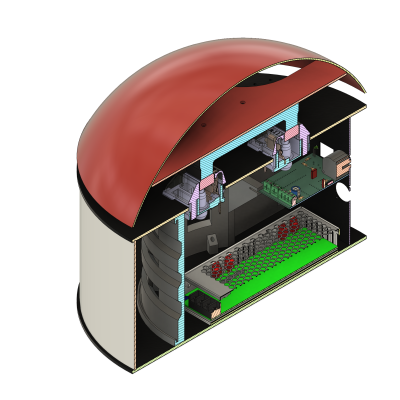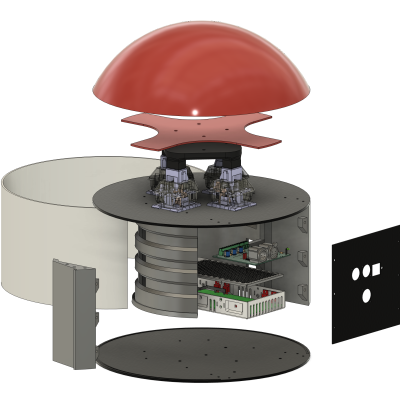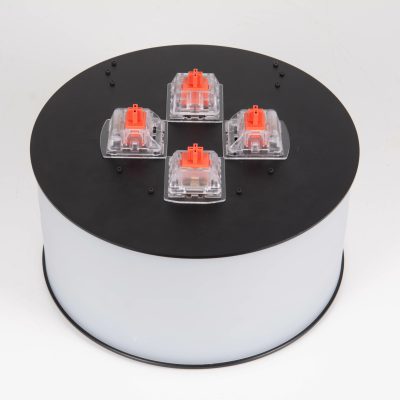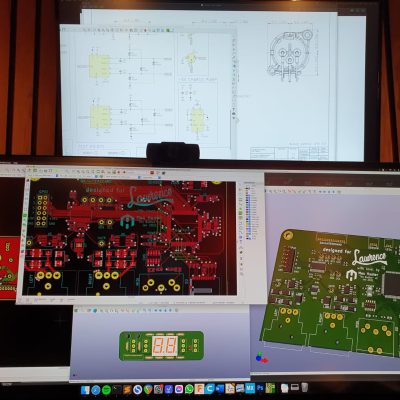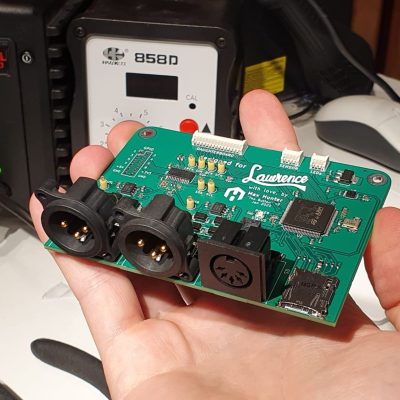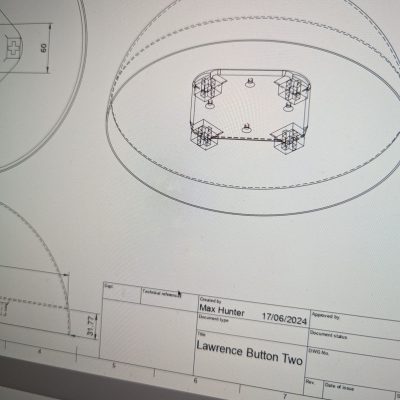Lawrence is a soul-pop band based out of New York City, fronted by sibling duo Clyde and Gracie Lawrence, who have performed with acts such as the Rolling Stones, the Jonas Brothers, Jon Bellion and Jacob Collier. Their high-octane show is entirely live, with no backing track, but they wanted a very visible and clear way of triggering one-shot samples from stage. I was commissioned to design and build this one-off piece.
Design
We initially designed and the band toured with a smaller self-contained button, which was based on a custom STM32 board with high-performance DACs and line drivers, and a synchronised WS2812 curved panel, which could have samples uploaded to it from an SD card and a custom format for 25fps animations streamed off the card.
The band rapidly outgrew this and wanted a larger version. By now they were touring with a full-time lighting designer and Ableton rig, so the spec changed to be a MIDI trigger and DMX-controlled lighting fixture. The mechanical design of the second version was significantly more robust, with a CNC’d and powder-coated aluminium body, a welded and powder-coated dome top, with 3D-printed parts and modified oversized Keilh switches with custom-wound springs to provide the right amount of ‘breaking’ force when the button is pushed.
The LEDs are on three flexible PCBS, each with 256 WS2812 LEDs, wrapped around a 3D-printed frame and with a bent acrylic diffuser (heated and wrapped around a wooden CNCd jig)
The new PCB was based around two Arduinos (so the band could easily change the firmware in the field if needed) with one handling DMX -> WS2812 duties, and the other handling GPIO -> MIDI duties.
The whole unit is powered off a 10A, 5V switchmode power supply on a Powercon connector, and has toured for close to a year with no failures.
Roles
- Hardware, firmware, and mechanical design and build.
Year
2024
